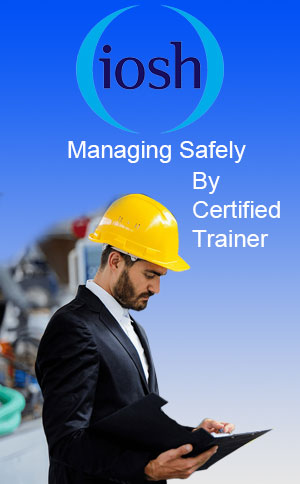IOSH Managing Safely Course
The IOSH Managing Safely course is a worldwide recognized course designed for managers and supervisors across all industries. It focuses on equipping them with the knowledge and skills to manage health and safety effectively in the workplace. The course covers key areas such as risk assessment, hazard identification, accident prevention, and legal responsibilities, helping participants create a safer work environment and comply with health and safety regulations. It is interactive, with practical exercises, case studies, and assessments to reinforce learning.
The Institution of Occupational Safety and Health (IOSH) is a British organisation for health and safety professionals. The Institution is an independent, not-for-profit organisation, originally called the Institution.
Importance Of IOSH Course
IOSH managing safely Certificate: Introduces managers at all levels, to the different aspects of managing safety and health in the workplace, It provides the knowledge and understanding to manage the health and safety issues within their responsibilities and reinforces why good health and safety is essential to performing their roles successfully.
IOSH Managing Safely is designed for managers and supervisors across all industries and organisations.
| Course Title |
Course Duration |
IOSH Managing Safely |
Two Weeks |
| Classes in a week |
Course Satus |
Mon To Thu |
Register Now |
Course Contents IOSH Managing Safely
- Module one: Introducing managing safely
- The three key moral, legal and financial reasons for managing safely
- Manager responsibility and accountability for safety and health
in the workplace
- Module two: Assessing risks
- Definitions of the terms ‘hazard’, ‘hazardous event’ and ‘risk’
- Definition of the term ‘risk assessment’
- Definition of the terms ‘likelihood’ and ‘consequence’
- Risk assessment process and risk rating systems
- The benefits of carrying out risk assessment
- Module three: Controlling risks
- Definition of the term ‘reasonably practicable’
- How to evaluate risk using a risk matrix and how to control those risks
- How to reduce risk by applying the ‘hierarchy of risk control’
- How implementing risk controls can impact the likelihood of an incident,
consequence of an incident or both factors
- Definition of the term ‘residual risk’
- Modules two and three should include a practical activity to spot hazards,
assess and control risk
- Module four: Understanding responsibilities
- An overview of what the law requires an organisation to do to protect
the safety and health of workers and other persons under its control
- Definition of the term ‘reasonably foreseeable’
- The three knowledge tests to help determine ‘reasonably foreseeable’
risks: common, industry and expert knowledge
- The difference between criminal law and civil law in relation
to safety and health
- The possible outcomes of not working within the law
- Where to find help and guidance for working within the law
- The key parts, and the elements of each part, of a health
and safety management system
- The key benefits of introducing a health and safety management system
- Why leadership is an essential part of a health and safety management system
- Module five: Understanding hazards
- The six main hazard categories and how hazards can fall into more than
one group:
- mechanical
- physical
- chemical
- environmental
- biological
- organisational
- Common hazards in the workplace, their effects and symptoms
and how to manage them. Hazards covered are:
- aggression and violence
- asbestos
- bullying
- chemicals
- computer workstations
- confined spaces
- drugs and alcohol
- electricity
- fire
- getting in and out
- heights
- housekeeping
- lighting
- manual handling
- noise
- plant and machinery
- radiation
- slips and trips
- stress
- temperature
- vehicles and transport
- vibration
- any other relevant hazards
- Module six: Investigating incidents
- Definition of the terms ‘incident’, ‘accident’ and ‘near miss’
- Reasons to investigate incidents
- Definition of the terms ‘incident’, ‘accident’ and ‘near miss’
- Reasons to investigate incidents
- The benefits of incident investigation
- Definition of the terms ‘immediate’, ‘underlying’ and ‘root’ causes
in relation to incidents
- The actions to be taken following an incident
- Incident reporting
- The stages of a structured approach to incident investigation
- Module seven: Measuring performance
- The three essential principles for good safety and health performance
- What types of information performance indicators can give to help
improve safety and health in the workplace
- The characteristics of good key performance indicators
- The differences between ‘proactive’ and ‘reactive’ performance indicators
- What is meant by ‘auditing’
- The two types of auditing: internal and external
- Types of evidence used in an audit


